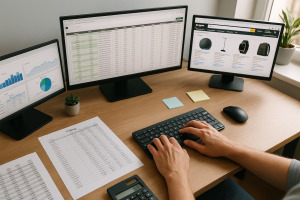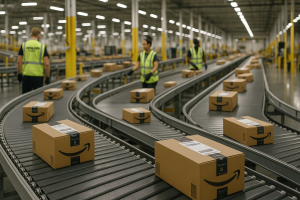You did it.
You reached out to a brand. You showed them how you could help. You explained your value. And they said yes.
Now what?
 For most new sellers, this is the point where excitement turns to overwhelm. That first “yes” is everything—but it comes with responsibilities. You’re not just buying inventory; you’re becoming a trusted partner. And how you handle the next steps can determine whether that brand works with you long-term or walks away.
For most new sellers, this is the point where excitement turns to overwhelm. That first “yes” is everything—but it comes with responsibilities. You’re not just buying inventory; you’re becoming a trusted partner. And how you handle the next steps can determine whether that brand works with you long-term or walks away.
The good news? There’s a simple, repeatable workflow that removes the guesswork. Let’s break it down.
Step 1: Get the Price List
Once the brand agrees to work with you, request their wholesale price list. You’ll often receive a spreadsheet or PDF with product names, SKUs, and pricing.
What to look for:
- Minimum advertised price (MAP) policies
- Case pack or order minimums
- Product popularity and reviews (spot-check on Amazon)
- SKU consistency (Are these ASINs already live? Are there variations?
If anything looks confusing, don’t be afraid to ask. Brands respect clarity.
Step 2: Analyze and Select Test Products
Don’t go all in right away. Even if the brand is strong, every SKU is different.
 This is where a fractional volume test buy can be your best friend. Instead of placing a $5,000 order off the bat, test buy only a few weeks’ sales volume per ASIN.
This is where a fractional volume test buy can be your best friend. Instead of placing a $5,000 order off the bat, test buy only a few weeks’ sales volume per ASIN.
This lets you:
- Evaluate real sales performance
- Identify potential listing issues
- Reduce your upfront risk
- Keep cash flow healthy
Even more importantly, it builds trust with the brand. You’re not just a seller—you’re a responsible buyer.
Step 3: Place a Purchase Order
Once you’ve picked your test SKUs, submit a formal purchase order (PO). Most brands will provide a template, or you can make your own from Google Sheets templates.
Include:
- SKU, product name, and quantity
- Price per unit
- Shipping terms (who pays, and where it’s going)
- Billing and delivery addresses
This is your first “official” transaction. Make it clean and professional.
Step 4: Receive the Invoice and Make Payment
The brand will then send you an invoice, typically net terms (e.g., pay in 30 days) or due upfront.
Pro tip: If you don’t have net terms, ask about them after your first order goes smoothly. Many brands are open to it once you build rapport.
Step 5: Track the Shipment
Once payment is confirmed, the brand ships the product. Usually you need to go into Seller Central, input their info to create labels, and attach via email for the Brand’s warehouse team. Then Amazon and UPS take it from there.
 Keep an eye out for:
Keep an eye out for:
- Delivery times
- Damages or shortages
- Carrier info for check-ins if needed
If you’re using a prep center, arrange shipping with the brand’s accounts and add the price to the invoice if able. Then make sure they know the PC knows a shipment is coming and how to handle the goods when they arrive.
Step 6: Go Live, Track, and Prepare for Reorders
Once your inventory is live, monitor it daily.
What you’re looking for:
- Sell-through rate (How fast are units moving?)
- Buy box consistency
- Customer feedback or product issues
Use this data to make smarter decisions on your reorder timing and quantity. Reordering too late = out of stock. Too early = cash tied up.
And always keep the brand updated. Share wins. Ask for suggestions. Offer to improve their listings if you spot problems.
Key Takeaways
Here’s a quick summary of what to do after you get a “yes” from a brand:
- ✅ Request the wholesale price list and study the SKUs
- ✅ Choose a handful of products for a small test buy
- ✅ Submit a clear purchase order
- ✅ Pay invoice promptly and track the shipment
- ✅ Monitor sales and prepare for your first reorder
- ✅ Keep communication strong with the brand

Leave a Reply